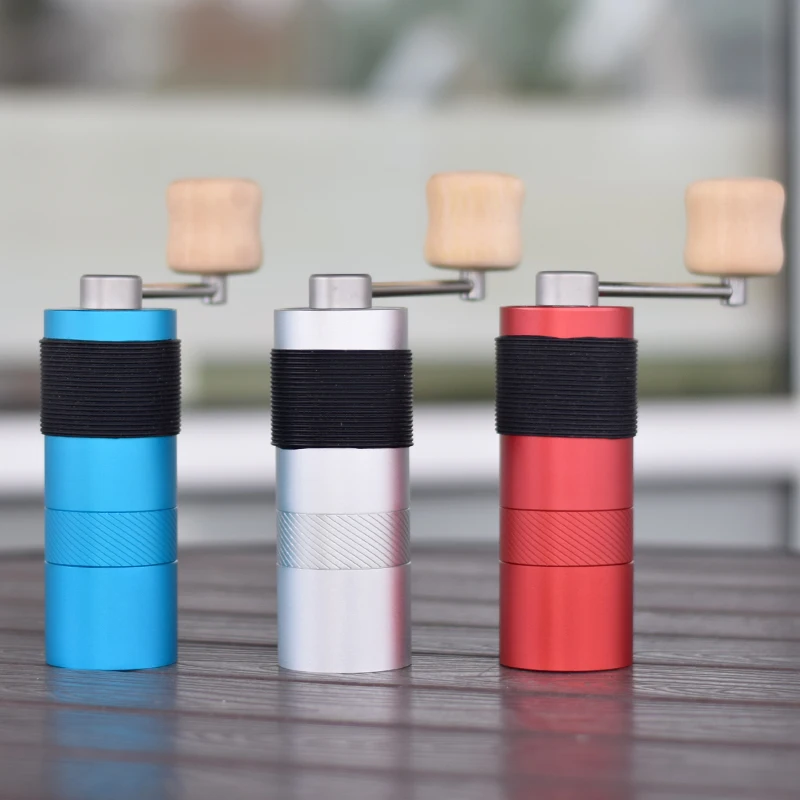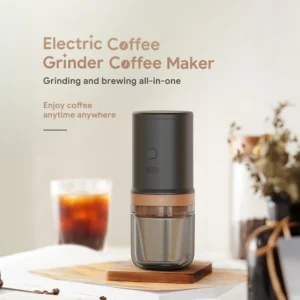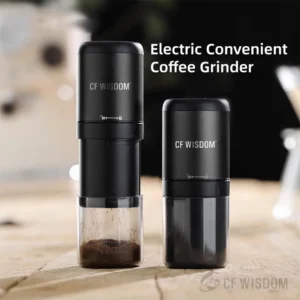Understanding the Travel Coffee Challenge
For coffee lovers, travel often means compromising on their beloved brew. Hotel coffee packets, overpriced café purchases, or—worst of all—going without coffee entirely can put a damper on an otherwise perfect trip. The challenge is real: how do you make great coffee with limited space, minimal equipment, and unpredictable facilities?
Different travel scenarios create unique brewing constraints. A backpacker counting every ounce has different needs than a road-tripper with trunk space to spare. A business traveler in hotels faces different limitations than someone camping off-grid without electricity.
Finding the sweet spot between quality and convenience is essential for travel coffee satisfaction. The perfect method balances portability with the ability to produce a cup that actually makes you smile, not grimace. Throughout this article, we’ll explore various travel-friendly brewing methods, helping you discover which approach best matches your travel style and coffee preferences.
When preparing for your journey, understanding various travel-friendly coffee grinding options can significantly enhance your brewing experience no matter which method you choose.
Key Decision Factors: Finding Your Perfect Travel Coffee Method
Before diving into specific brewing methods, consider these key factors that will help you determine which travel coffee solution is right for you:
- Portability & Weight: How much space can you dedicate to coffee gear? Will you be carrying it on your back or in a vehicle?
- Durability & Materials: Will your coffee setup withstand being tossed in a backpack or suitcase? Plastic may be lighter but metal tends to last longer.
- Ease of Use & Learning Curve: Do you want something straightforward or are you willing to master a more technical method?
- Cleanup Requirements: How will you dispose of grounds and clean equipment with potentially limited water access?
- Coffee Quality & Preferred Taste Profile: Are you looking for something that tastes like your home brew, or are you willing to compromise?
- Power Requirements: Will you have access to electricity or a heat source?
- Brew Time: Do you need something quick for busy mornings, or can you enjoy a more leisurely brewing ritual?
- Cost Considerations: What’s your budget for both equipment and ongoing coffee expenses?
- Versatility: Do you want a method that can make multiple styles of coffee or serve different numbers of people?
Your answers to these questions will guide your decision. For instance, someone hiking the Appalachian Trail will prioritize weight and simplicity, while a family on a road trip might favor versatility and volume.
Many travelers find that investing in quality travel coffee grinders pays dividends in freshness and flavor, regardless of which brewing method they choose.
AeroPress: The Versatile Travel Champion
The AeroPress has earned its reputation as one of the most travel-friendly coffee makers available. This innovative brewing system uses gentle air pressure to extract rich, smooth coffee without bitterness. About the size of a coffee mug and weighing just 8 ounces (227 grams), it’s remarkably compact while producing exceptional coffee.
Advantages:
– Extremely lightweight and compact, especially the AeroPress Go travel model
– Nearly unbreakable construction
– Makes 1-3 cups in just 1-2 minutes
– Versatile brewing styles (standard method, inverted method, cold brew)
– Easy cleanup (grounds form a puck that pops out)
– Produces clean, sediment-free coffee
– Affordable ($30-40)
Limitations:
– Requires filters (paper or metal reusable)
– Makes relatively small volumes at once
– Requires hot water source
– Has multiple small parts to keep track of
The AeroPress is ideal for solo travelers or couples who appreciate quality coffee and have access to hot water. It excels in hotel rooms, camping, and even air travel (just bring pre-ground coffee through security and ask for hot water onboard).
For optimal results when using this brewing method, understanding the differences between manual and electric grinders for AeroPress travel can help you make the perfect cup anywhere.
Collapsible Pour-Over Drippers: For Clean and Light Travel
Pour-over brewing involves pouring hot water over coffee grounds in a filter, allowing gravity to draw the water through the coffee and filter into a cup below. For travelers, collapsible versions solve the bulk problem while delivering clean, bright coffee flavor.
Advantages:
– Ultra-lightweight and packable (some fold completely flat)
– Simple operation with minimal parts
– Produces clean, clear coffee with nuanced flavors
– Various materials available (silicone, plastic, metal)
– Affordable options ($10-30)
– Works directly over a mug
Disadvantages:
– Requires careful pouring technique for best results
– Needs paper filters (additional packing item)
– Not as consistent as some other methods
– Typically brews one cup at a time
– Requires a steady hand while pouring
Notable travel pour-over options include the GSI Outdoors Ultralight Java Drip (collapsible silicone), the Munieq Tetra Drip (folds flat, metal), and the MiiR Pourigami (folding metal design). Each offers different advantages in terms of durability, packability, and heat retention.
These brewers are perfect for minimalist travelers who prioritize light packing and appreciate bright, clean coffee flavors. They pair perfectly with manual coffee grinders designed for travel to create the freshest possible brew.
Travel French Press Systems: Rich Flavor On the Go
Travel French press systems combine brewing and drinking into a single container, typically doubling as an insulated travel mug. Unlike traditional French presses, these travel versions let you brew, filter, and drink from the same vessel—an elegant solution for travelers.
Advantages:
– All-in-one brewing and drinking system
– Produces rich, full-bodied coffee
– Keeps coffee hot for hours (insulated models)
– No separate filter required
– Generally durable construction
– Makes 10-15 oz (295-443 ml) of coffee
Disadvantages:
– More challenging to clean while traveling
– Coffee continues to extract if grounds aren’t removed
– Heavier than some other travel options
– Some sediment remains in the final cup
– Limited capacity for sharing
Popular options include the Espro Travel Press and Bodum Travel Press, both featuring double-wall insulation to maintain temperature and improved filtration systems that reduce sediment compared to traditional French presses.
These systems are ideal for travelers who prefer rich, full-bodied coffee and want to minimize the number of separate items they’re carrying. They’re particularly well-suited for commuters, road trips, and office travelers who need their coffee to stay hot throughout the morning.
Portable Espresso Makers: Authentic Shots Anywhere
For espresso enthusiasts unwilling to compromise on their coffee while traveling, portable manual espresso makers offer a remarkably capable solution. These devices use manually generated pressure to produce authentic espresso with crema, without electricity or bulky equipment.
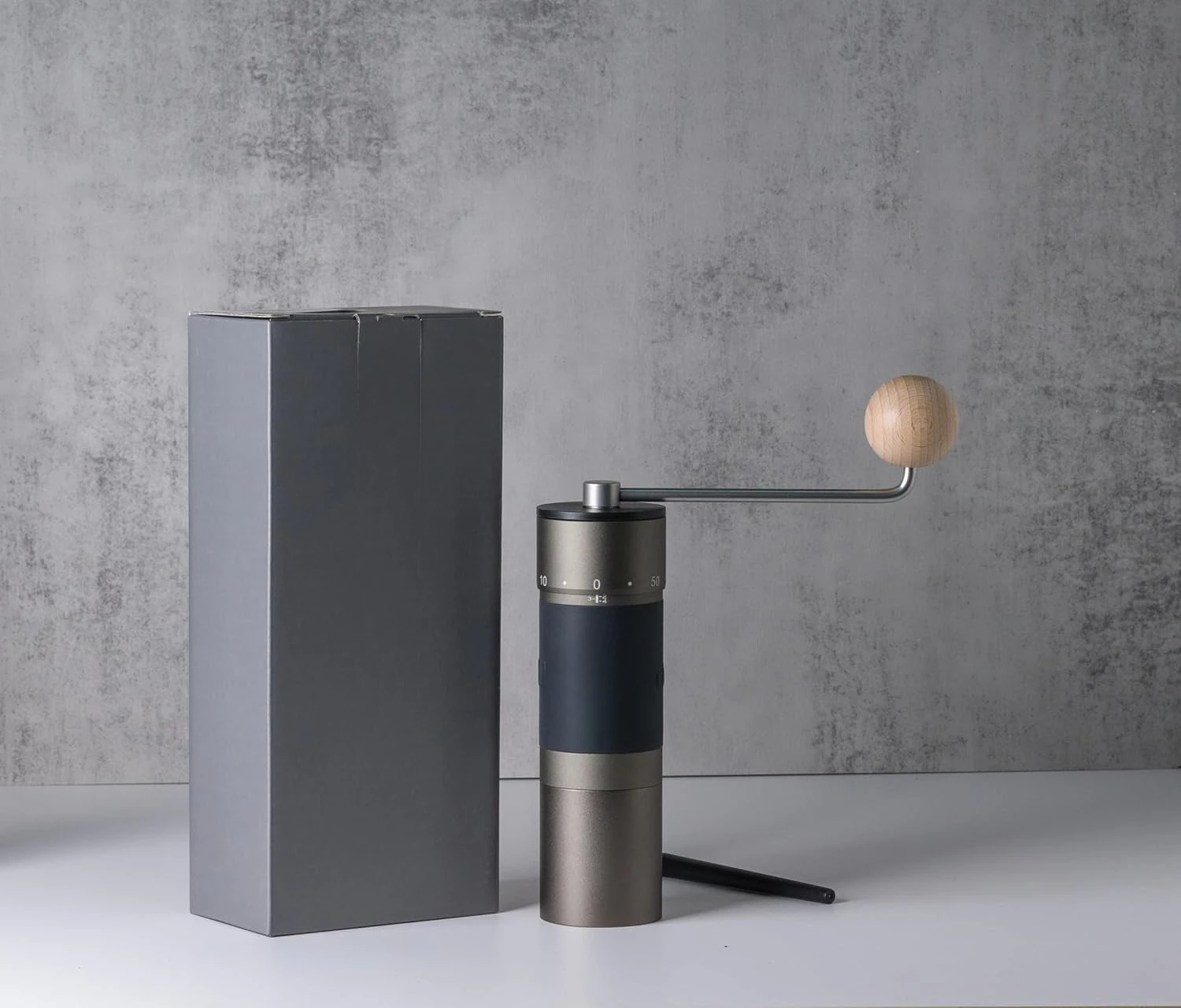
Advantages:
– Creates true espresso with crema
– Compact size (most are smaller than a water bottle)
– No electricity required
– Options for different levels of involvement and budgets
– Makes concentrated coffee ideal for milk drinks
– Durable construction for travel abuse
Disadvantages:
– Requires significant physical effort (pumping)
– More sensitive to grind size than other methods
– Limited to single shots (1-2 oz/30-60 ml per use)
– Generally more expensive ($50-100+)
– More complex operation than other travel methods
Popular options range from the entry-level Wacaco Minipresso to the more sophisticated Nanopresso and Picopresso models. The Flair NEO offers a different approach with a lever-based system that some find more intuitive.
These devices are perfect for espresso purists who don’t mind a bit more effort and complexity to get their exact preferred coffee style. They pair exceptionally well with dedicated manual espresso grinders capable of producing the fine, consistent grind espresso demands.
Compact Moka Pots: Strong Coffee for Stovetop Access
The Moka pot, an Italian stovetop coffee maker, produces a concentrated, rich brew similar to (though not exactly the same as) espresso. While traditional Moka pots can be bulky, small 1-3 cup versions offer a relatively compact solution for travelers with access to a heat source.
Advantages:
– Creates strong, concentrated coffee
– Durable and long-lasting (especially stainless steel models)
– No filters required
– Simple operation once learned
– Economical over time
– Classic, time-tested design
Disadvantages:
– Requires a heat source (stove, campfire, portable burner)
– Not suitable for ultralight travel (weighs 10-16 oz/280-450g)
– Takes 5-10 minutes to brew
– Requires careful timing to avoid bitterness
– Not as portable as other options
The iconic Bialetti Express is available in small sizes, while GSI Outdoors makes a camping-oriented stainless steel version. The aluminum versions are lighter, while stainless steel offers greater durability.
Moka pots are best for travelers staying in accommodations with kitchens, car campers with portable stoves, or anyone with reliable access to a heat source who appreciates strong, robust coffee. The brewing process becomes a pleasant morning ritual for many travelers.
Premium Instant Coffee: The Ultralight Solution
Forget everything you thought you knew about instant coffee. The specialty coffee industry has revolutionized this category with high-quality instant options that actually taste good. For the absolute minimum in weight, space, and effort, premium instant coffee offers a compelling solution.
Advantages:
– Lightest possible option (just a small packet)
– Zero equipment needed (just hot water and a cup)
– No cleanup beyond disposing of the packet
– Very fast preparation (30 seconds)
– Easy to pack multiple servings
– No risk of equipment breaking or failing
Disadvantages:
– More expensive per cup than brewing methods
– Not as fresh-tasting as freshly brewed coffee
– Limited selection of roasts and origins
– Less environmental-friendly (individual packaging)
– Not as customizable in strength
Companies like Swift Cup Coffee, Voilà, and Sudden Coffee have applied careful processing techniques to preserve flavor compounds typically lost in traditional instant coffee production. Even major specialty roasters like Stumptown and Blue Bottle now offer instant versions of their popular coffees.
This option is perfect for ultralight backpackers, business travelers with packed schedules, or anyone who wants a reliable backup option when other brewing methods aren’t practical. It’s also ideal for situations where weight and space are at an absolute premium.
Travel Coffee Maker Comparison Chart
| Brewing Method | Portability | Durability | Ease of Use | Cleanup | Coffee Quality | Power Needed? | Brew Time | Approx. Cost |
|---|---|---|---|---|---|---|---|---|
| AeroPress | ★★★★★ | ★★★★★ | ★★★★ | ★★★★★ | ★★★★ | Hot water | 1-2 min | $30-40 |
| Collapsible Pour-Over | ★★★★★ | ★★★★ | ★★★ | ★★★★ | ★★★★ | Hot water | 2-4 min | $10-30 |
| Travel French Press | ★★★★ | ★★★★ | ★★★★★ | ★★ | ★★★ | Hot water | 4-5 min | $20-40 |
| Portable Espresso Maker | ★★★★ | ★★★★ | ★★ | ★★★ | ★★★★★ | Hot water | 1-3 min | $50-100+ |
| Compact Moka Pot | ★★★ | ★★★★★ | ★★★ | ★★★ | ★★★★ | Heat source | 5-10 min | $20-50 |
| Premium Instant Coffee | ★★★★★ | ★★★★★ | ★★★★★ | ★★★★★ | ★★★ | Hot water | 30 sec | $1-3/cup |
Each method has distinct advantages depending on your specific travel needs and coffee preferences. The chart above offers a quick reference to help identify which options might work best for your situation.
Essential Travel Coffee Accessories
The right accessories can significantly enhance your travel coffee experience, regardless of which brewing method you choose:
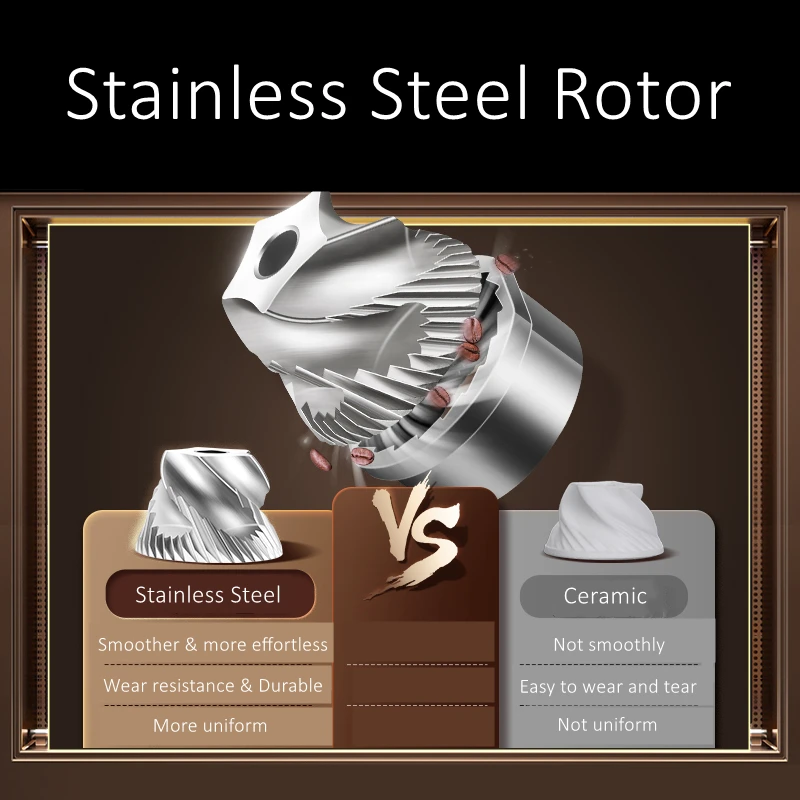
Manual Coffee Grinders
A quality manual grinder with ceramic or steel burrs ensures fresh flavor and proper grind size for your chosen brewing method. Look for models with adjustable settings and durable construction.
Travel Kettles
Collapsible silicone kettles or small electric travel kettles (for places with reliable electricity) provide hot water when needed. Some campers prefer lightweight titanium kettles for use over flames.
Compact Scales
For precision brewing, pocket digital scales help maintain consistency. Look for models that measure in 0.1g increments for best results.
Storage Solutions
Airtight containers protect your beans from oxygen and moisture. Consider purpose-made coffee vaults or repurpose small containers with tight seals.
Insulated Travel Mugs
Keep your carefully brewed coffee at the right temperature longer with double-wall vacuum insulated mugs that maintain temperature for hours.
Water Filtration
Since water quality dramatically affects coffee taste, consider portable water filters or treatment tablets to improve questionable water sources.
Fine Adjustment Hand Grinder, Precision Manual Grinder, Travel Coffee Grinder
Price range: $185.11 through $494.63 Select options This product has multiple variants. The options may be chosen on the product pageHand Burr Grinder, Hand Crank Coffee Grinder, Manual Espresso Grinder, Portable Coffee Grinder
Price range: $262.72 through $300.22 Select options This product has multiple variants. The options may be chosen on the product pageHandheld Burr Grinder, Manual Coffee Mill Grinder, Travel Coffee Grinder
$191.45 Select options This product has multiple variants. The options may be chosen on the product pageManual Coffee Grinder Stainless Steel, Manual Espresso Grinder, Travel Coffee Grinder
Price range: $276.22 through $276.39 Select options This product has multiple variants. The options may be chosen on the product page
Having the right portable coffee grinder makes all the difference in producing fresh, flavorful coffee with any brewing method you choose for travel.
Pro Tips for Better Travel Coffee
Master these expert strategies to elevate your travel coffee experience:
Water Quality Solutions
– Carry Aquatabs or other water purification tablets to improve taste of questionable water
– Use bottled spring water when practical (avoid distilled water, which lacks minerals coffee needs)
– Let very hot water cool to 195-205°F (90-96°C) before brewing for optimal extraction
Bean Freshness
– Pre-portion beans into small, airtight containers (one per day)
– Consider pre-grinding just before your trip for ultralight travel
– Keep beans out of direct sunlight and heat
– Prioritize freshly roasted beans for your trip
Environment Adaptation
– Adjust grind size slightly finer at higher altitudes
– Extend brew time in cold environments
– Use warmer water when brewing outdoors in cold weather
– Preheat your brewing device and mug with a small amount of hot water
Space-Saving Techniques
– Use brewing devices that nest inside other gear
– Store coffee inside your mug when packed
– Consider multi-purpose items (like a mug that works with multiple brewing methods)
– Use coffee filters as improvised paper towels when needed
These practical tips help you adapt to travel conditions while still producing excellent coffee. Being flexible and resourceful allows you to maintain quality despite changing environments.
Matching Methods to Travel Types
Different travel styles demand different coffee solutions. Here’s how to match your brewing method to your travel type:

Ultralight Backpackers
– Best option: Premium instant coffee packets
– Runner-up: Collapsible pour-over (like GSI Ultralight)
– Key consideration: Every gram and cubic inch matters
Business Travelers
– Best option: AeroPress (especially the Go version)
– Runner-up: Portable espresso maker
– Key consideration: Hotel room brewing without making a mess
Road Trippers/Car Campers
– Best option: AeroPress or compact French press
– Runner-up: Small Moka pot with portable stove
– Key consideration: More space for equipment but may lack electricity
Espresso Enthusiasts
– Best option: Wacaco Nanopresso or Picopresso
– Runner-up: Strong AeroPress with metal filter
– Key consideration: Getting that essential crema and concentration
Budget Travelers
– Best option: Collapsible pour-over dripper
– Runner-up: Premium instant coffee (used sparingly)
– Key consideration: Low initial investment and ongoing costs
Understanding your specific constraints and preferences helps narrow down the optimal brewing solution. Many travelers eventually develop a collection of options they deploy depending on the specific trip type.
The portable coffee grinders designed for camping are particularly rugged and well-suited for outdoor adventures where durability is essential.
Frequently Asked Questions
Can I bring coffee brewing equipment on airplanes?
Yes, coffee brewing equipment is generally allowed in both carry-on and checked luggage. Manual grinders, AeroPress, and pour-over devices all pass through security without issues. For carry-ons, just remember that you can’t bring water through security, and ground coffee should be in small quantities (large amounts of powder can trigger additional screening).
How do I get hot water in a hotel room without a kettle?
Many hotels have in-room coffee makers that can provide hot water. Alternatively, insulated travel bottles can keep water hot for hours if filled at a coffee shop. As a last resort, some travelers use the hot water from bathroom taps in higher-end hotels or request hot water from room service.
How do I clean coffee equipment with limited water access?
Wipe equipment with paper towels or dedicated microfiber cloths first to remove most residue. A small amount of water can then rinse the remaining coffee oils. For longer trips, consider biodegradable cleaning wipes specifically designed for dishes. Some devices like the AeroPress can be “dry cleaned” by simply ejecting the puck and wiping the seal.
What’s the best option if I have absolutely no space?
Premium instant coffee from specialty roasters is your friend here. Companies like Swift Cup and Voilà have revolutionized instant coffee quality. These packets take up virtually no space and require only hot water and a vessel to drink from.
How do I grind coffee without electricity while traveling?
High-quality hand grinders for travel brewing offer consistent results without power. Look for models with steel or ceramic burrs, adjustable settings, and durable construction. Though they require some effort, the flavor improvement from freshly ground beans is substantial.
Why Savor Suite Recommends Manual Grinders for Travel Coffee
Regardless of which brewing method you choose, freshly ground coffee dramatically improves your cup quality. Pre-ground coffee begins losing flavor compounds within minutes of grinding, while whole beans maintain their quality for weeks when properly stored.
Manual grinders offer several key advantages for travelers:
– No electricity required – grind anywhere, anytime
– Smaller and lighter than electric alternatives
– Greater durability with fewer breakable parts
– Quieter operation (important in shared accommodations)
– Often more affordable than comparable electric grinders
– Adjustable grind settings for different brewing methods
The grind quality from a good manual burr grinder far exceeds pre-ground coffee or blade grinders. Consistent particle size ensures even extraction, which directly translates to better flavor in your cup, regardless of which brewing method you use.
At Savor Suite, we’ve found that travelers who invest in quality compact coffee mills enjoy significantly better results from even the simplest brewing methods. Fresh grinding is perhaps the single most impactful improvement you can make to your travel coffee experience.

